I have a problem to understand the minimum switching voltage of the relay, especially, what impact it has. I found these topics that briefly mention, but still unsure what to make of it
Can I drastically undervolt/underpower a relay?
Parameters when choosing a relay
The voltage across the relay is ideally 0, right? So I it is perhaps the voltage drop on the relay. But what confuses me, since the resistance of the relay is very low relatively high currents would be required to produce ot.
May be I better understand with an example.
Edit3: more details about usage of the relay I consider this relay that would be used on a custom board for testing and measurement of batteries (lithium and otherwise). It would connect/disconnect charging/discharging currents 1 µA to 25 mA. Battery voltages in range 1V-4.5V. The relay isto be controlled from Rapsberry PI 2. Since GPIO pins don't have current capability to drive the coil, the control signal would be shifted to the main analogue voltage level of 5.5 V.
EDIT2 : a rough presentation of how the relay would be used

Edit: example from the datasheet I linked. It is in contact, not coil section
 If not it would be very unfortunate because it is only compact DPST relay availible.
If not it would be very unfortunate because it is only compact DPST relay availible.
For this case additional question: can be a DPDT relay be used in place of DPST?
